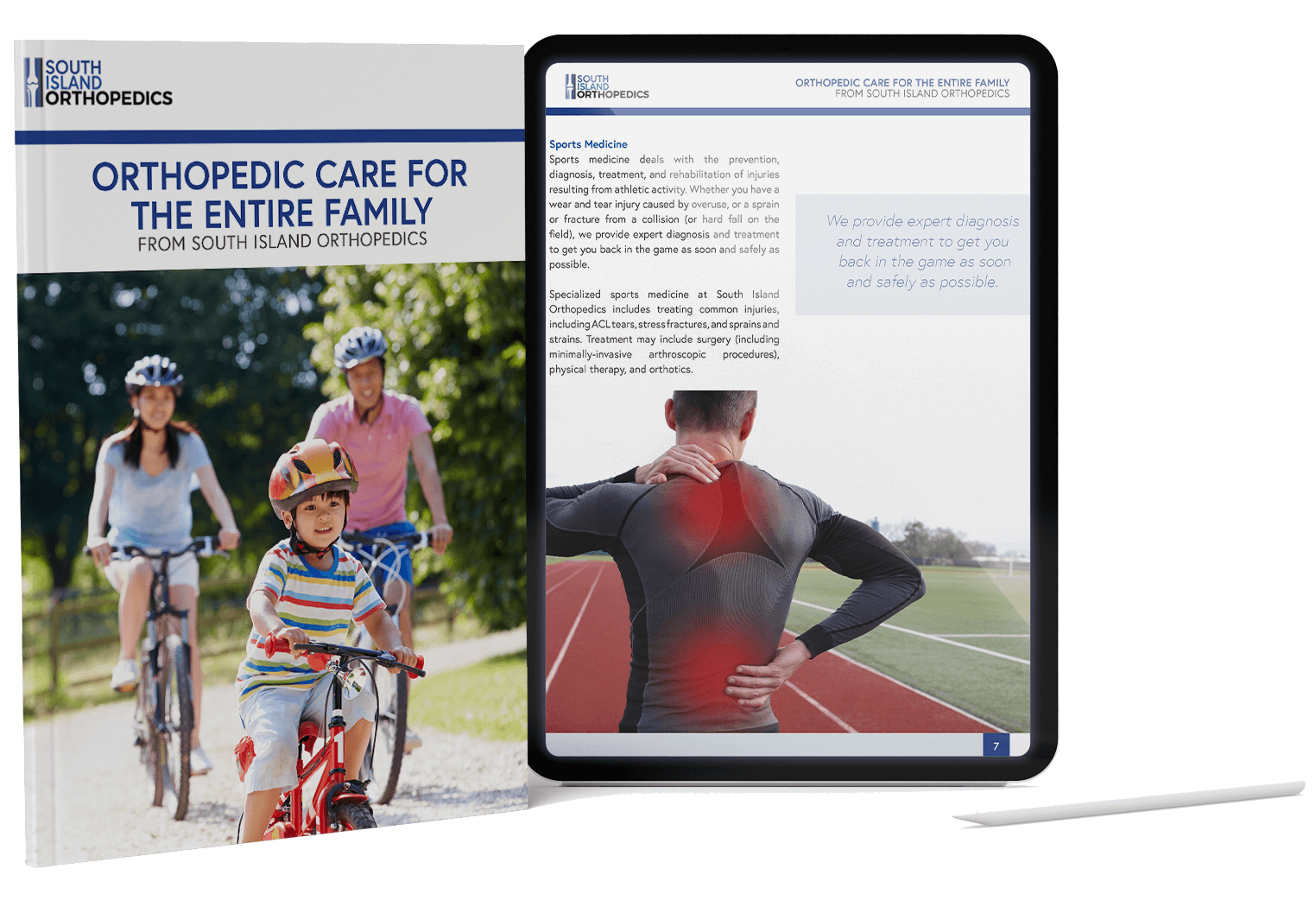What to Expect From the Best Pain Management Doctors on Long Island
Pain is one of the most relatable aspects of the human experience. Whether it is stubbing your toe, breaking a bone, or living with chronic pain, everyone has to deal with and figure out how to manage it.
The many types of pain and subsequent treatment options make it challenging to know which solutions are best for you, which is where a Long Island pain management specialist comes in. Read on to learn more about pain and how comprehensive pain management doctors can keep you healthy and whole.
What Is Pain Management?
 Pain management is a subspeciality of different medical specialties, including anesthesiology, physical medicine and rehabilitation, neurology, and psychiatry. Focused on preventing, evaluating, treating, and rehabilitating pain patients, it is a role that can use expertise from a variety of specialties.
Pain management is a subspeciality of different medical specialties, including anesthesiology, physical medicine and rehabilitation, neurology, and psychiatry. Focused on preventing, evaluating, treating, and rehabilitating pain patients, it is a role that can use expertise from a variety of specialties.
In other words, comprehensive pain management care may involve several specialist providers who tailor treatment to a patient’s needs. However, the lead for pain management treatment is often the pain medicine doctor.
Pain medicine doctors often do their residency in PMR (physical medicine and rehabilitation) and their fellowship training in pain medicine/management. Providing care at multiple levels, the pain medicine doctor may directly treat the patient, prescribe medication or physical therapy, or coordinate care from other providers.
For information on the best pain management doctors on Long Island, click here.
Acute Pain
With the combined expertise of the medical specialists described above, pain medicine can treat a wide variety of pain-inducing ailments, including acute pain. Acute pain is a normal nervous system function, alerting you to possible injury or bodily harm. Acute pain due to trauma is short-term, typically lasting from a few moments to several weeks. In addition, it can be mild or severe but gradually resolves as an injury heals.
If the pain lasts over a few months, it is considered chronic pain. In acute pain management, the causes fall into two main groups: spontaneous insult or trauma and elective or planned procedures.
Spontaneous Insult or Trauma
 Spontaneous insult or trauma refers to varying levels of discomfort or pain due to random physiological reactions or accidents. Mild, spontaneous pain can include headaches, an upper respiratory infection, or aches and soreness from physical exertion. Examples of more severe spontaneous pain are a deep cut, a sprained ankle, or a bone fracture. Highly traumatic incidents such as third-degree burns or high-speed vehicle collisions also fall under this category and can develop into chronic pain if not adequately addressed.
Spontaneous insult or trauma refers to varying levels of discomfort or pain due to random physiological reactions or accidents. Mild, spontaneous pain can include headaches, an upper respiratory infection, or aches and soreness from physical exertion. Examples of more severe spontaneous pain are a deep cut, a sprained ankle, or a bone fracture. Highly traumatic incidents such as third-degree burns or high-speed vehicle collisions also fall under this category and can develop into chronic pain if not adequately addressed.
You can usually address mild pain with rest, ice, compression, elevation (typically shortened to RICE), or over-the-counter analgesics. More significant physical trauma may require outpatient care or splinting but will usually heal with a combination of RICE and nonsteroidal anti-inflammatory drugs. The most severe spontaneous traumas may require an extended hospital stay, with prescribed stronger analgesics and even opioids.
Elective or Planned Procedures
“Planned” acute pain refers to the pain and discomfort associated with medical procedures from minimally invasive to major operations. Mild examples include office procedures like vaccinations, taking blood, or getting a catheter.
Procedures like same-day dental work, laparoscopic surgery, or minimally invasive joint treatments may cause more pain. Severely painful procedures include joint replacement, open abdominal surgery, or other surgeries requiring inpatient stays.
Doctors will often treat mild acute pain from procedures with a topical anesthetic, lidocaine, or ice. For more invasive treatments, if simple analgesics aren’t sufficient, opioids may be used for no more than 6 to 8 doses. The most severe pain due to highly invasive procedures may require a combination of analgesics and more potent steroids, possibly beginning before the surgery.
Chronic Pain
Recent numbers from the Journal of the International Association for the Study of Pain place the rate of U.S. adults living with chronic pain at just over 1 in 5. Distinct from acute pain, chronic pain is a significant medical condition with more complexities and complications. Chronic pain can result from many factors, last three or more months, and drastically reduce one’s quality of life.
Potential causes of chronic pain can include the after-effects of past traumatic injuries, congenital conditions, or age-related health issues. Other reasons include long-term diseases such as cancer and disorders like fibromyalgia. Due to the diverse and highly variable causes of pain, doctors will conduct a series of diagnostic exams to determine the root cause of your pain and design the best treatment plan for your needs.
 Among the conditions that can cause chronic pain are:
Among the conditions that can cause chronic pain are:
- Herniated discs
- Radiculopathy
- Spinal stenosis
- Facet joint pain
- Arthritis
- Migraines
- Previous injuries
- Cancer
- Reflex sympathetic dystrophy (RSD)
- Fibromyalgia
- Neuropathy
- Trigeminal neuralgia
Long Island Chronic Pain Management
For chronic pain, the goal of comprehensive pain management is to minimize pain because eliminating the pain is unlikely. Still, careful pain management allows for restored bodily functions and improved quality of life, creating a far better patient situation.
There are various treatments for chronic pain, and a Long Island pain management specialist will help select the best one for a patient based on their condition. Specialists can support patients with their knowledge of specific anatomical and physiological functions. Common treatments for chronic pain include the following:
- Medications such as over-the-counter anti-inflammatories or more potent drugs such as corticosteroids or opioids as needed.
- Injections to block nerve signals, relieving pain and inflammation. Injections are a highly effective treatment, as they can access the affected area directly.
- Electrical Stimulation Therapy is a safe and noninvasive process by which a device strapped to the body delivers shocks to nerves targeting the source of pain.
- Surgery is for the most severe cases when less-invasive procedures have not been successful. Examples of this kind of surgery include hip replacements, carpal tunnel surgery, and spine surgery. Surgery can restore function, although sometimes partially restricted.
Access Advanced Long Island Pain Management With SI Ortho
Comprehensive pain management providers such as SI Ortho will work with various specialists to provide a single access point for all your pain management needs. Our pain center allows us to offer extensive in-house services, ensuring that your pain management is focused and truly addresses your unique needs.
Our physicians are affiliated with some of the best surgical locations across Long Island, Queens, and Brooklyn. Our partner surgical centers include Mercy Medical Center, East Hills Surgical Center, North Queens Surgical Center, and many others.
Request an appointment today to experience the best pain management doctors on Long Island.
South Island Orthopedics’ Guide to Bone and Joint Care

Posted in: Local, Pain Management
